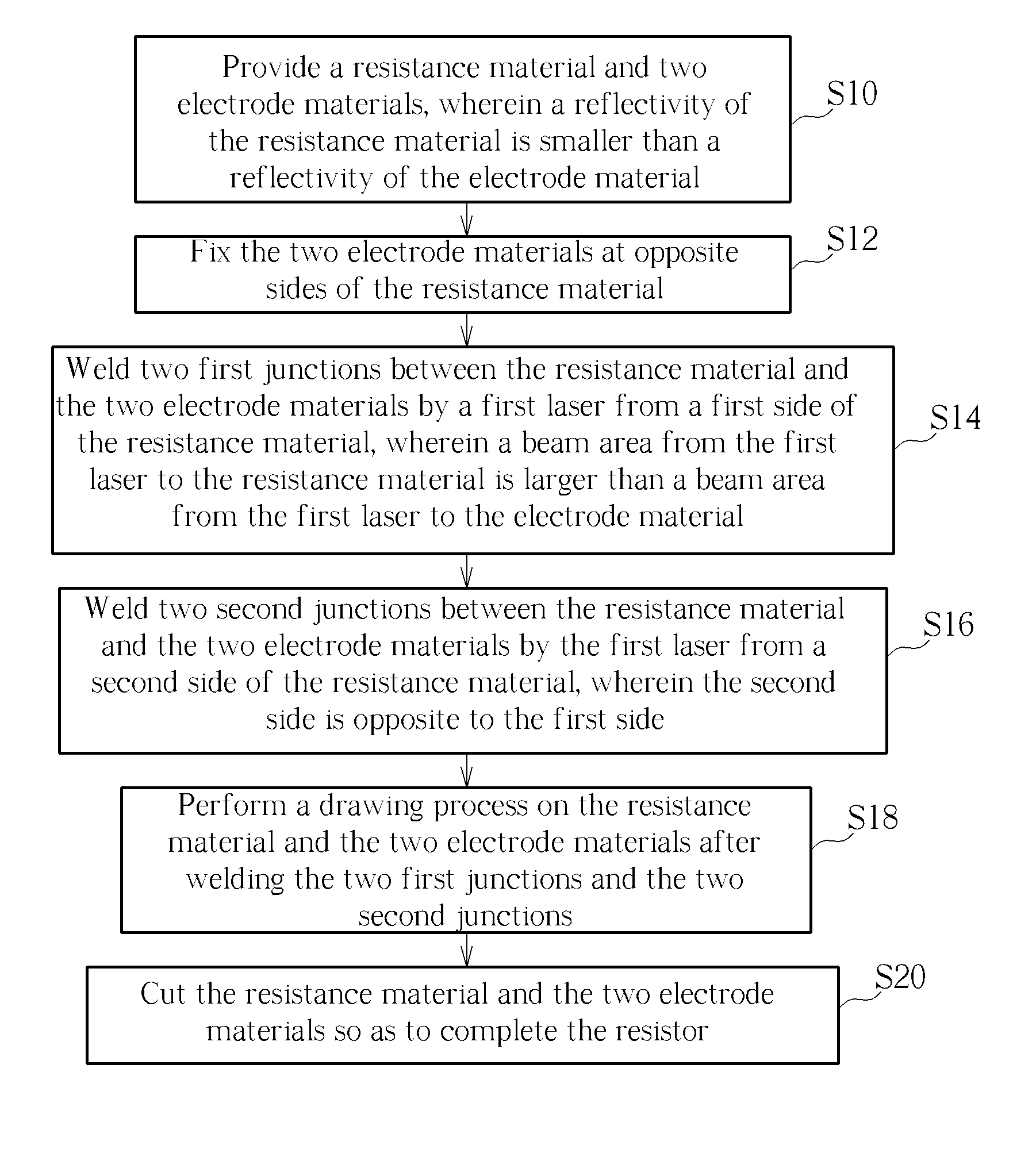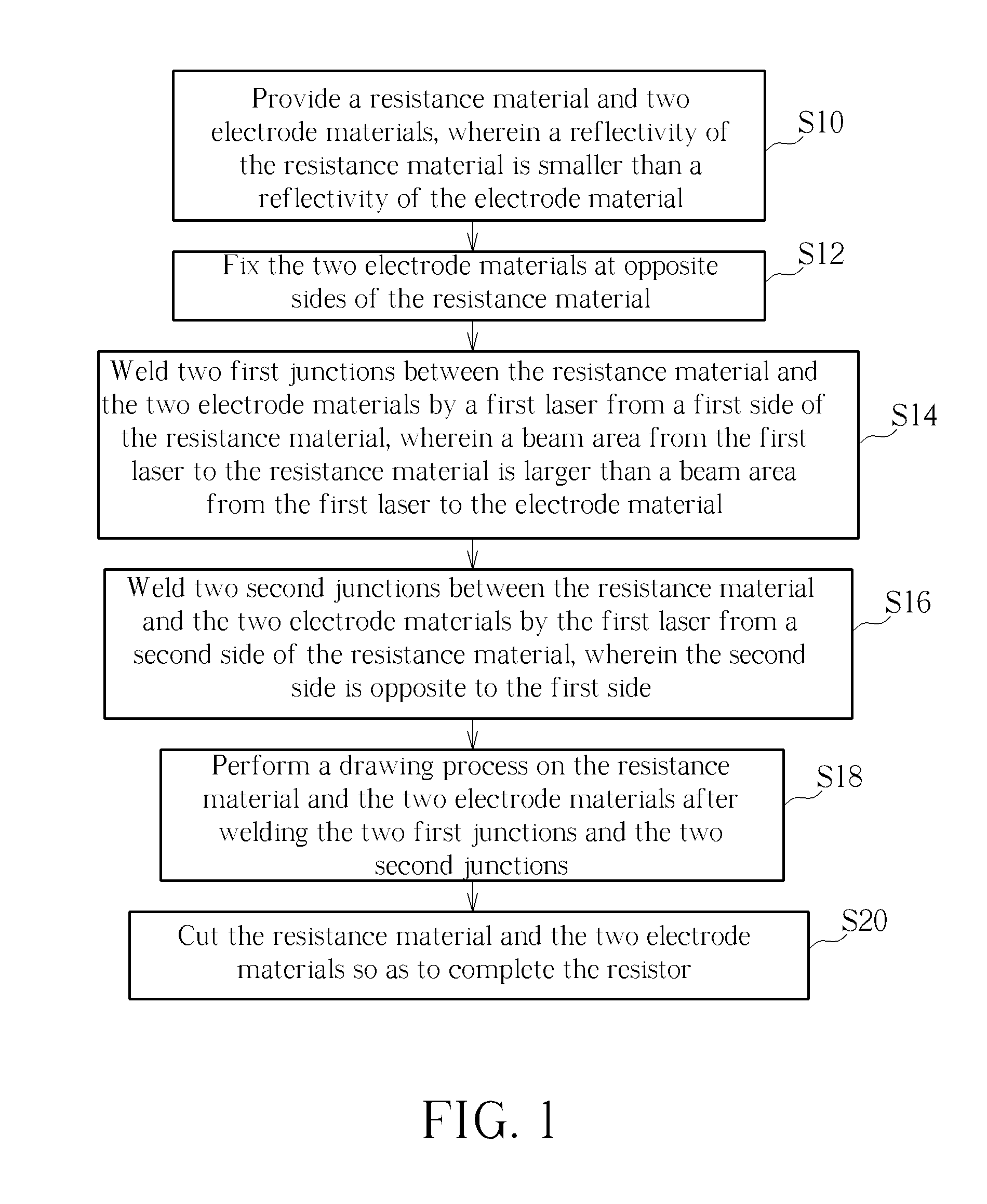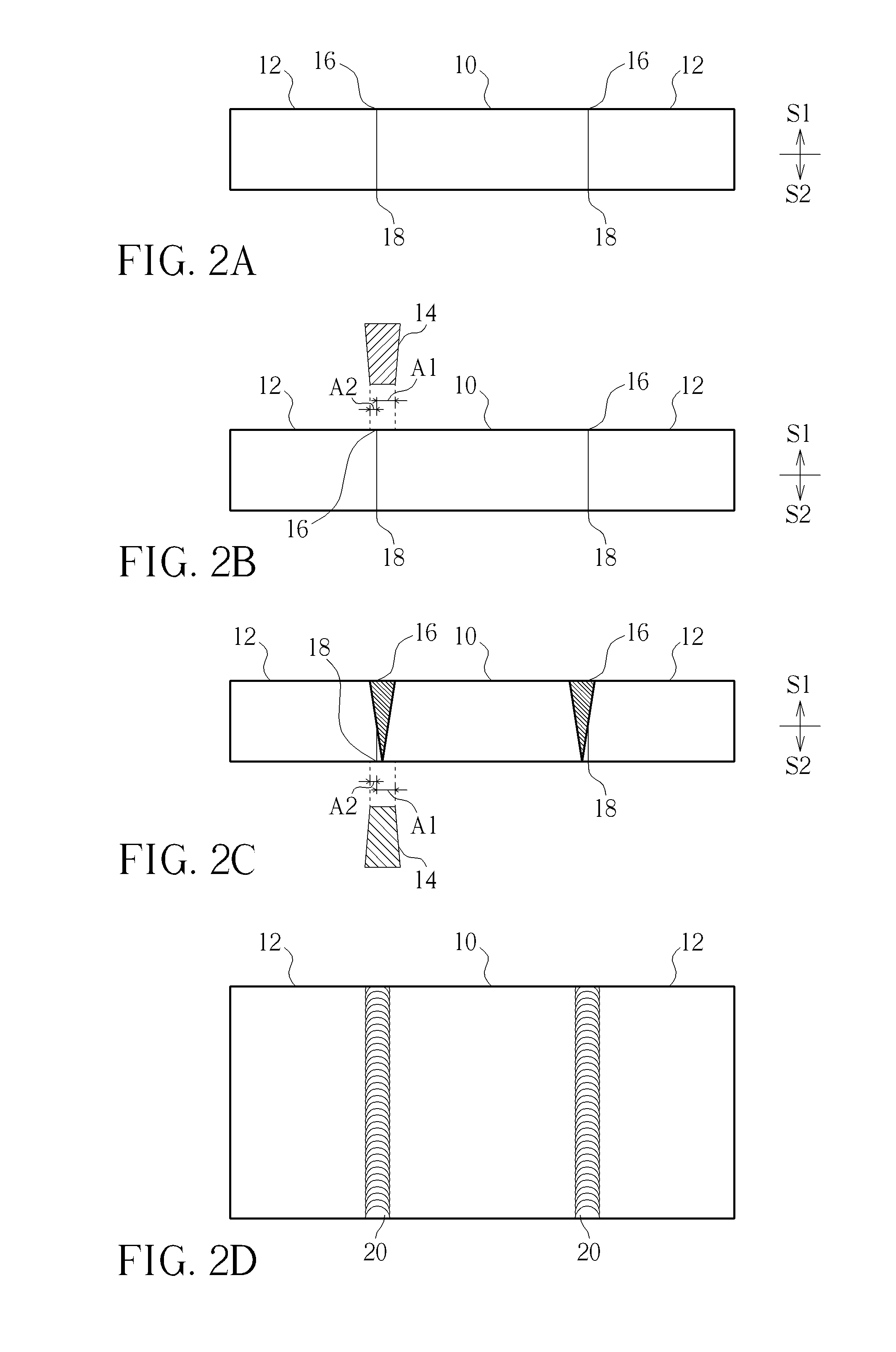Method of manufacturing resistor
a manufacturing method and resistor technology, applied in the direction of resistor details, lamination ancillary operations, chemistry apparatus and processes, etc., can solve the problems of high cost of using electron beams, x-ray generation of electron beams, and inability to weld electrode materials and resistance materials with laser beams, etc., to enhance laser welding intensity, and large thickness
- Summary
- Abstract
- Description
- Claims
- Application Information
AI Technical Summary
Benefits of technology
Problems solved by technology
Method used
Image
Examples
Embodiment Construction
[0020]Referring to FIGS. 1 to 4, FIG. 1 is a flowchart illustrating a method of manufacturing a resistor according to an embodiment of the invention, FIGS. 2A to 2D are schematic diagrams illustrating processes associated with the method shown in FIG. 1, FIG. 3 is a perspective view illustrating a resistor 1 manufactured by the method shown in FIG. 1, and FIG. 4 is a perspective view illustrating the resistor 1 shown in FIG. 3 from another viewing angle. First of all, step S10 is performed to provide a resistance material 10 and two electrode materials 12 (as shown in FIG. 2A), wherein a reflectivity of the resistance material 10 is smaller than a reflectivity of the electrode material 12. In this embodiment, the resistance material 10 may be NiCu alloy, MnCu alloy, NiCr alloy, NiCrAlSi alloy, CuMnSn alloy and so on, and the electrode material 12 may be Cu, Cu coated solder and so on.
[0021]Afterward, step S12 is performed to fix the two electrode materials 12 at opposite sides of th...
PUM
| Property | Measurement | Unit |
|---|---|---|
| thickness | aaaaa | aaaaa |
| thickness | aaaaa | aaaaa |
| resistance | aaaaa | aaaaa |
Abstract
Description
Claims
Application Information
 Login to view more
Login to view more - R&D Engineer
- R&D Manager
- IP Professional
- Industry Leading Data Capabilities
- Powerful AI technology
- Patent DNA Extraction
Browse by: Latest US Patents, China's latest patents, Technical Efficacy Thesaurus, Application Domain, Technology Topic.
© 2024 PatSnap. All rights reserved.Legal|Privacy policy|Modern Slavery Act Transparency Statement|Sitemap



